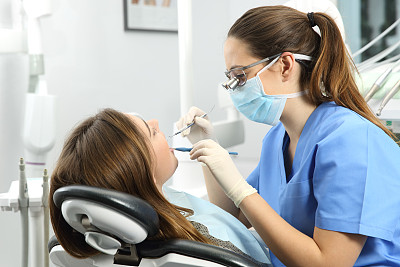The Journey of Extracting a Tooth A Comprehensive Guide to Dental Procedures and Care Tips
Summary: Extracting a tooth can be a daunting experience, but understanding the process can alleviate some anxiety. This comprehensive guide outlines the journey of tooth extraction, including identifying the need for extraction, the actual procedure, post-operative care, and tips for recovery. By breaking down each aspect, patients can feel more empowered and informed about what to expect, ensuring a smoother experience both during and after the procedure. The knowledge shared here aims to demystify dental extractions and highlight essential aftercare practices that will facilitate healing and enhance overall oral health.
1. Understanding the Need for Tooth Extraction

Tooth extraction is typically recommended when a tooth is severely decayed, damaged, or impacted. Understanding the signs that indicate a potential need for extraction is crucial. Symptoms such as persistent pain, swelling, or infection often lead to the conclusion that extraction may be the best course of action.
Your dentist will conduct a thorough examination, which may include X-rays, to assess the condition of the tooth and surrounding structures. Its essential to communicate any symptoms you may be experiencing, as this information can guide your dentists recommendations.
In some cases, orthodontic treatment may require the extraction of permanent teeth to make space for alignment. This decision is typically made after careful consideration of your dental health, treatment goals, and the potential benefits against possible drawbacks.
2. The Tooth Extraction Procedure Explained
The tooth extraction procedure varies depending on whether the tooth is visible above the gums or impacted beneath them. For visible teeth, the process is relatively straightforward, often involving local anesthesia and the use of specialized tools to gently loosen and remove the tooth.
For impacted teeth, such as wisdom teeth, the procedure may be more complex. Surgeons might need to make incisions in the gum tissue to access the tooth. Patients should be aware that multiple techniques and sedation options are available, and discussing these with your dentist can help ease anxiety.
Regardless of the complexity of the extraction, the dental team will ensure your comfort during the procedure, monitoring you closely to manage pain and anxiety, making the experience as pleasant as possible.
3. Post-Operative Care Tips for Recovery
Post-operative care is vital for recovery following a tooth extraction. Patients are typically advised to rest and avoid strenuous activity for at least 24 hours after the procedure. This rest period allows the body to begin the healing process without additional strain.
It is also important to follow specific instructions regarding pain management and swelling. Common recommendations include applying ice packs to the affected area, taking prescribed medications, and avoiding certain foods that could irritate the extraction site.
Maintaining proper oral hygiene is crucial, but it should be approached with care. While it may be tempting to brush teeth in the extraction area, dentists recommend avoiding it directly for the first couple of days to facilitate healing. Instead, gentle rinsing with saltwater can help keep the area clean without disrupting clot formation.
4. Identifying Complications and When to Seek Help
While most tooth extractions heal well, some patients may experience complications. Recognizing what constitutes a potential issue is essential for timely intervention. Symptoms such as severe pain that worsens over time, excessive bleeding, or signs of infection like fever could indicate complications.
If you experience any of these symptoms, do not hesitate to contact your dentist for guidance. Early detection and treatment of complications can often lead to better outcomes and prevent further dental problems.
Regular follow-up visits with your dentist will help monitor the healing process and ensure everything is progressing as it should be. Keeping clear communication with your dental team post-extraction can further enhance recovery and reinforce your confidence in your oral health management.
Summary:
Understanding the journey of tooth extraction can significantly reduce anxiety and empower patients to take charge of their dental health. From recognizing the need for extraction to engaging properly in post-operative care, this guide emphasizes the importance of education and proactive engagement with dental professionals.
Following the outlined procedures and care tips will facilitate a smooth recovery, keeping the overall health and wellness of your mouth at the forefront. Remember, your dental health is essential, and understanding each step of the process is vital.
This article is compiled by Vickong Dental and the content is for reference only.



